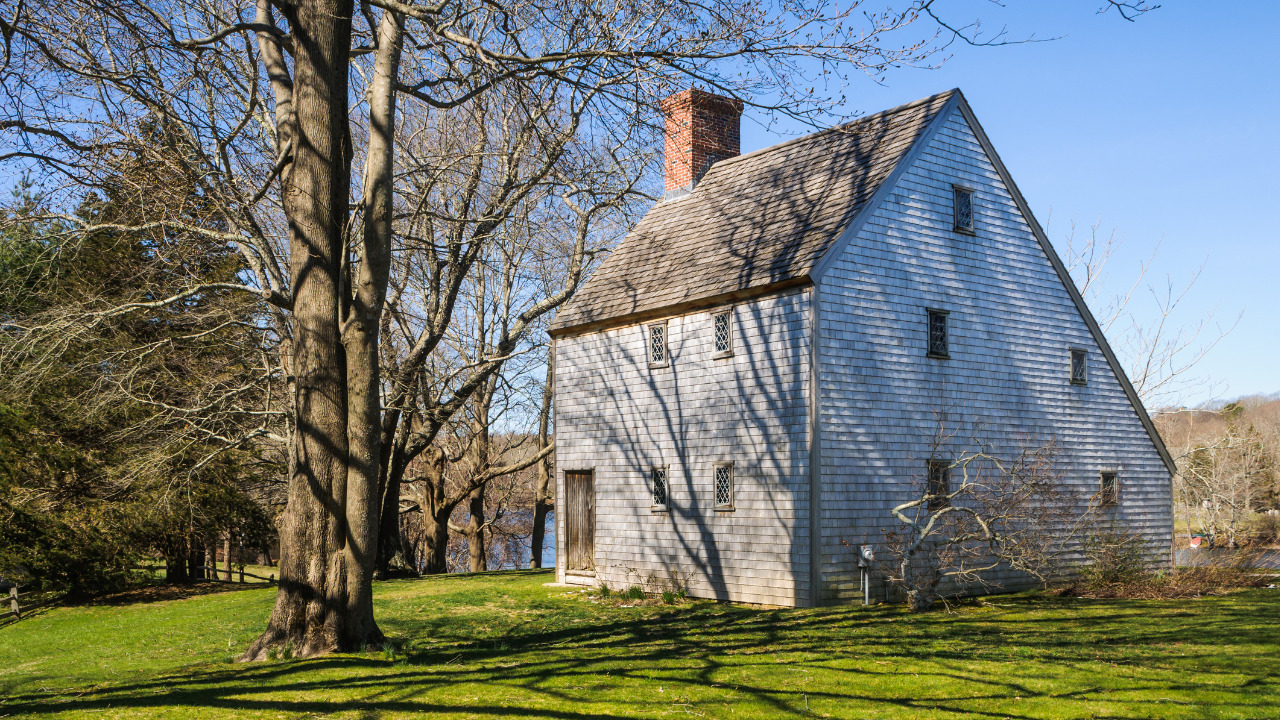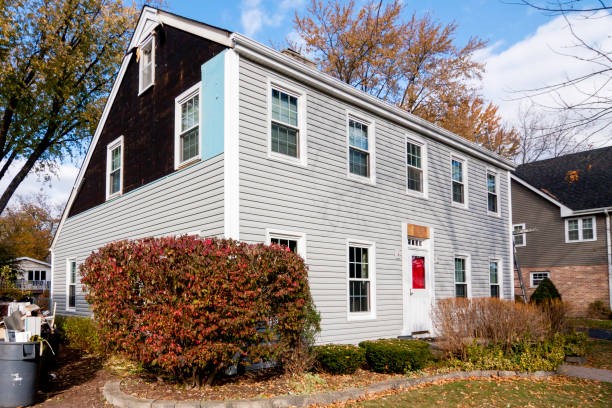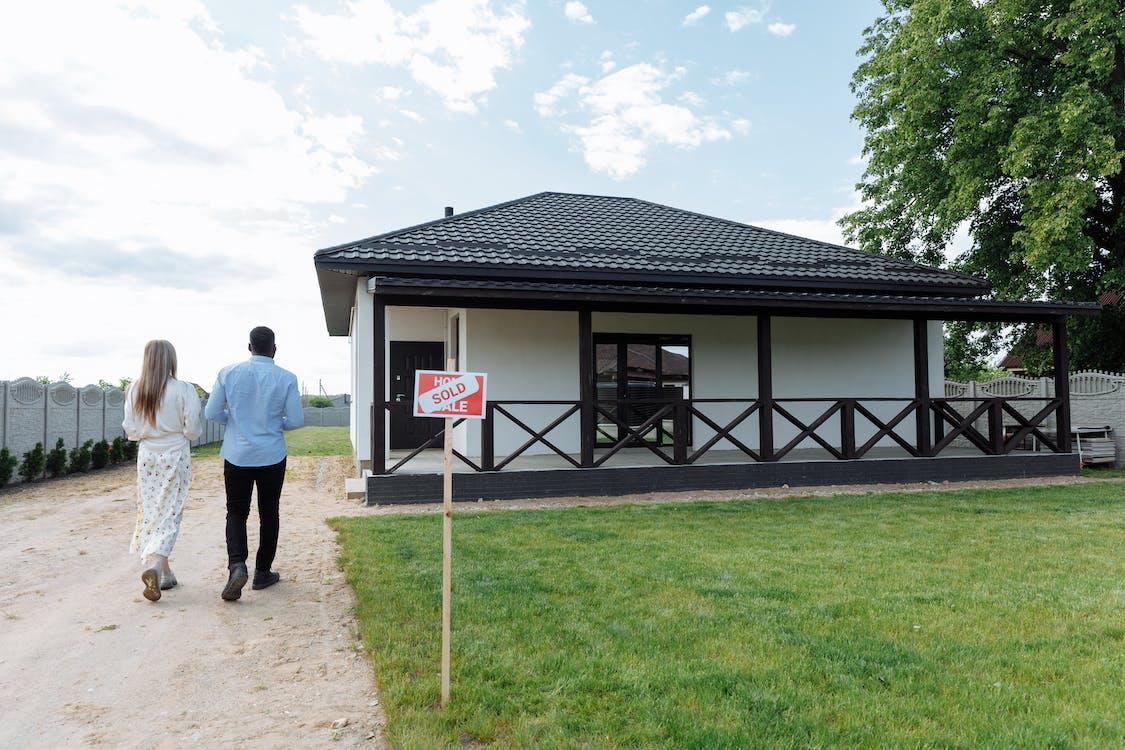While chocolate fanatics wish to live in a chocolate house, this might be the last thing a realistic structure will be built of. However, we assure you that living in a saltbox is no joke and doing so will add an exquisite flavor to your living.
Let us see how these saltboxes originated and what exactly makes them up.
A saltbox house is a vernacular architectural type from the New England area, a region that comprises six states. In the 1800s, this type began dying off in popularity. However, its unique characteristic of being adaptive to extreme snowfall, rainfall and strong winds gave pace to its construction and made it stand out.
Table of Contents
Historical Connection
The saltbox’s unique and asymmetric shape is what gives it its name. By its appearance, it resembles a box used in ancient times for storing salt. The house has a two-story front and a single-story rear. The sloping roof in the front and rear of the house are unequal. The front of the house has a gentle slope in comparison to a more slanting rear slope.
The reason for such a unique design is that initially, the house started as a normal gable, two-story house. But when families grew, the space needed to accommodate them was created by extending the rear of the house such that additional space was created in the first story at the back of the house. This back roof created by the lean serves another purpose; it is a great wind barrier during the cold months of winter.
Architectural Details of a Saltbox House
Traditionally, a saltbox is a wooden framed house although there are a few brick saltboxes in existence, too. However, they did have a center-stone chimney that acted as an anchor to the whole building and that chimney used to be very large and very prominent.
The structure of a saltbox comprises wood posts that are used to hold up the girts i.e., the beams on the exterior and core walls and also the summer beam.
The rest of the wooden frame was built traditionally, fastener-free which means that no nails were needed. This was achieved using mortise and tenon or dovetail construction joints or in some cases, wooden pins were used to hold the structure as one.
Characteristics of a Traditional Saltbox
- A saltbox house has a long-pitched roof that slopes from the roof of the second story down to the first story.
- The siding is made up of painted clapboard which is simply wood cut radially from a log.
- The flat chimney at the front pictures a variant of the colonial style of architecture.
- Saltbox houses may sometimes have additional storage at the rear end that is created by overhangs at the back.
- The interior layout of a saltbox house very much resembles its British domestic architecture roots. It comprises two rooms on either side of a center chimney stack.
Contemporary Saltbox Houses
The modern saltbox houses pay homage to their ancient architectural design nuances. However, some features have evolved over time and have been incorporated into contemporary construction.
Many saltboxes now have shingles on the exterior along with painted shutters. On the interior, they may have patterned wallpapers and antique settings that picture their old, subtle look.
Advantages of a Saltbox House
- Saltbox homes allow low-investment expansion. This is also the main concept behind the construction of such a house.
- In areas having mild to heavy snowfall and rainfall, saltbox houses serve the defense against weather extremities. The snow accumulation on the rooftops becomes practically non-existent because of the pitched roof and the rainwater is also effectively directed towards the drains.
- The structural weight of a saltbox house when compared to a house with vertical supports is less. This is an indirect indication of reduced construction material needed.
- The roof of a saltbox house is easy to construct and no special tools or exotic materials are needed.
- This type of house needs less maintenance and it might be an apt choice for you if you want to avoid spending too much on maintaining the overall look of your house.
- Saltboxes provided an added space for living and are just the right choice for big families. This is because the spare area can be utilized for extra bedrooms or an office if needed.
- The exterior of a saltbox is a sight to behold. The intentional asymmetry in construction provides a distinctive and aesthetic look.
Disadvantages of a Saltbox House
- Despite having a beautiful exterior look, the pitched roof reduces the available space in the attic. In addition, it is more complicated to design and construct than a simple gable roof and because of this, the builders might not give their consent in opting for such a style.
- A sloping roof on the inside might not showcase the ideal aesthetics of a residence and the ceiling present at an angle is generally not the preferred choice of residents.
- A saltbox generally provides diminished insulation against winters and summers when the temperature drops and spikes respectively.
- This type of house is not best suited for all property types and is generally specific to the size and shape of the residential plot.
Frequently Asked Questions (FAQs)
Do saltbox houses exist today?
Many of the saltbox houses still exist, some of which have turned into museums and the others are mostly private dwellings.
The architecture of a saltbox house is not a style that has completely died out. Even in contemporary architecture, saltboxes are still considered an aesthetic construction and are therefore being designed and built in New England.
What is the purpose behind the construction of a saltbox house?
Saltbox houses were primarily designed to permit easy accommodation as families grew in size and number. This was made possible by extending the lower story of the double-story construction in the backward direction and connecting the story tops with a pitched roof.
The roof served a two-fold purpose. Firstly, it prevented snow from accumulating on the rooftop during harsh weather and also served as a barrier against forcef







